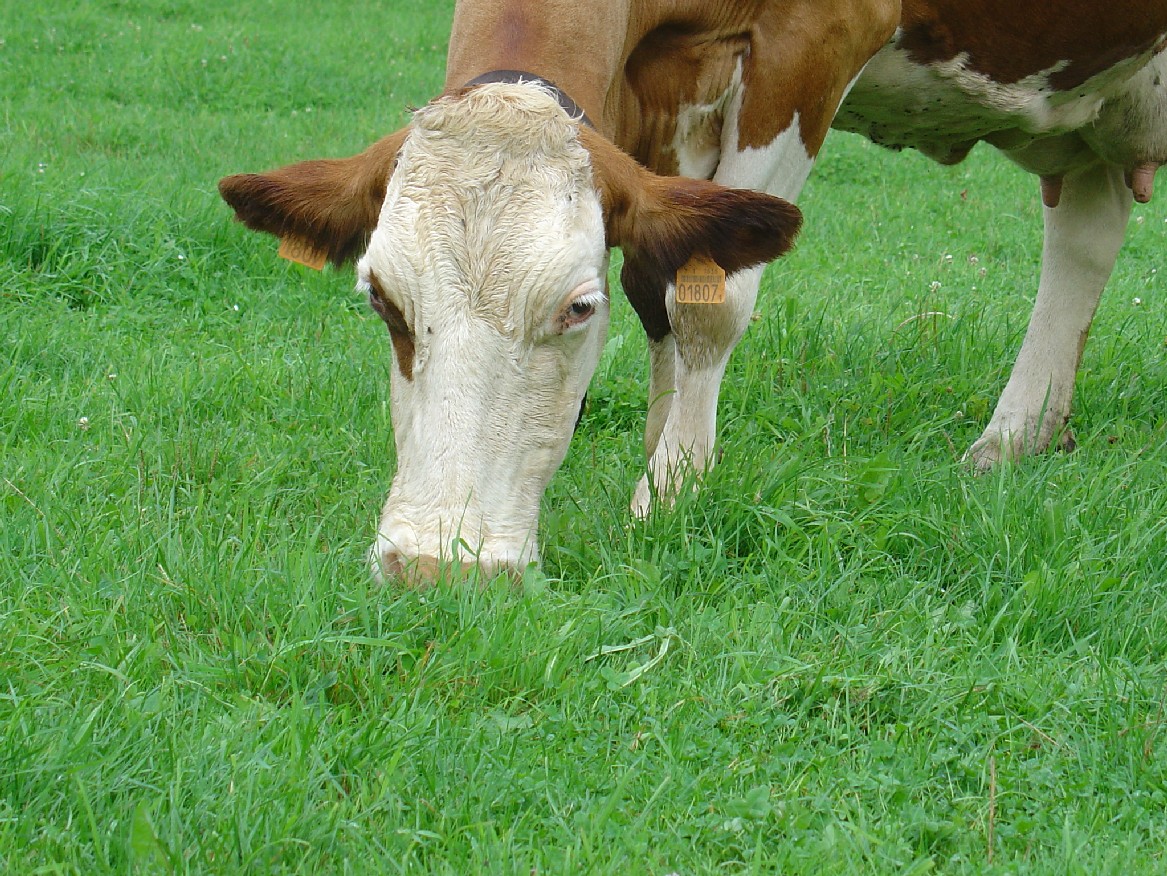Half-day grazing occurs when the cattle are kept on pasture for around 7-10 hours per day. This usually occurs either throughout the day (day grazing) or from evening to morning (night grazing).
When grazing half a day, cattle consume around 30-60% of their daily feed dry matter intake via pasture (e.g. dairy cows 7-11 kg DM/day). Since cattle graze less in the dark, when grazing at night it is important that the animals do not come to the pasture too late. However, when grazing at night, slightly less pasture feed is consumed than when grazing during the day.
With hourly grazing, the cattle are on pasture between 2-6 hours a day. If there is a good supply of pasture feed, intensively grazing dairy cows consume around 1-2 kg of dry matter pasture feed per hour.
Advantages of hourly or half-day grazing:
- Concentrated feed (especially protein concentrated feed) can be saved in a targeted manner compared to pure stable feeding with canned feed
- Higher basic feed performance than when fed purely with preserved feed
- Compared to stable keeping, more animal-friendly husbandry and improved heat detection
- Compared to full-day grazing, less grazing area is required for hourly or half-day grazing. Performance-based feeding can also be implemented more easily and individual animal observation is easier to carry out. The animals can be specifically let out into the pasture to eat.
- Fluctuations in the pasture can be balanced out by supplementary feeding
- Well suited for young animals (under ½ year old) in combination with shelter/stable
Disadvantages of hourly or half-day grazing:
- Compared to all-day grazing, it is more labor-intensive, higher feed costs are incurred and the animals show more restless grazing behavior
- Only practical on areas close to stables
- Gentle supplementary feeding (reduce and adjust concentrated feed!) is necessary
- More fluctuating rumen conditions throughout the day (switching between pasture and stable feed)
Adjust concentrated feed
As the proportion of pasture feed in the daily ration increases, the use of concentrated feed can or must be reduced. In dairy farming, protein supplements during the grazing period can be dispensed with.
- When grazing half-day or hourly, the daily concentrate feed should not exceed 5-7 kg (decreasing amount depending on pasture feed share), even with high daily milk production.
- The higher the proportion of pasture grass in the ration, the more important it is when using concentrated feed that it contains more slowly degradable components (grain corn, bran, dried pulp, etc.). If clawed deer occurs more often, this often indicates previous disorders of the rumen metabolism.
- In dairy farming, supplementation with protein-rich components is only necessary when daily milk yields are high (from 25 to 32 kg of milk, depending on the pasture or corn silage content). An important assessment criterion here is the urea content of the milk. If the milk urea content is over 25 mg, no protein supplement is necessary for pasture.
- In rearing, cattle fattening and suckler cow farming, supplementation with protein-rich components can usually be completely dispensed with when kept on pasture.
Tips for hourly grazing operations
When grazing for hours, the cattle should be on the pasture primarily to eat and not to lie down! This means that most of the feces and urine are produced in the stable and the heat and fly burden on the animals is low. Since cattle show their main feeding activity in the early morning or early evening hours, dairy cows, for example, should come to the pasture to graze quickly after milking for at least 2-3 hours in the morning. In the dark, but also between 11:00 a.m. and 3:00 p.m., there is little grazing in normal grazing.
- From a rumen physiological point of view, grazing twice a day (morning and evening) is more beneficial than grazing once.
- Hourly grazing farms continue to feed the usual basic feed ration in the stable. It is good if the ration also contains some hay. Corn silage, if available, also has a good supplementary effect in hourly and half-day grazing. Despite supplementary feeding. However, cows should generally be driven out to pasture hungry - exception: the start of grazing in spring or when there is a risk of bloating.
- Very good results (performance, working hours!) can also be achieved with hourly grazing with the “short grass pasture” grazing system.






